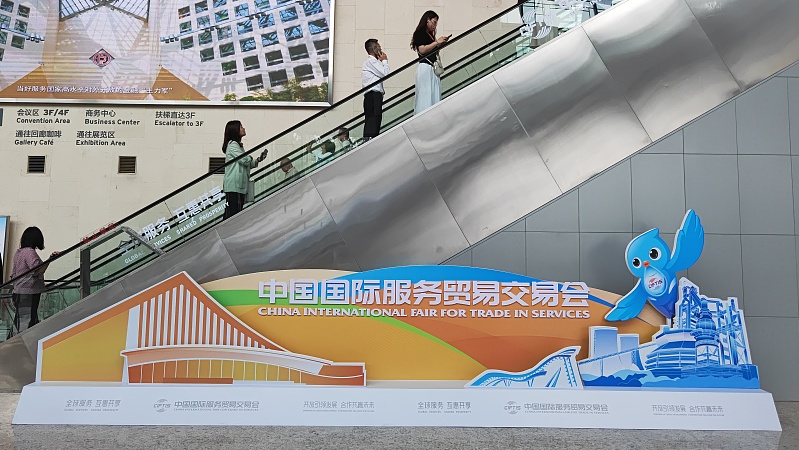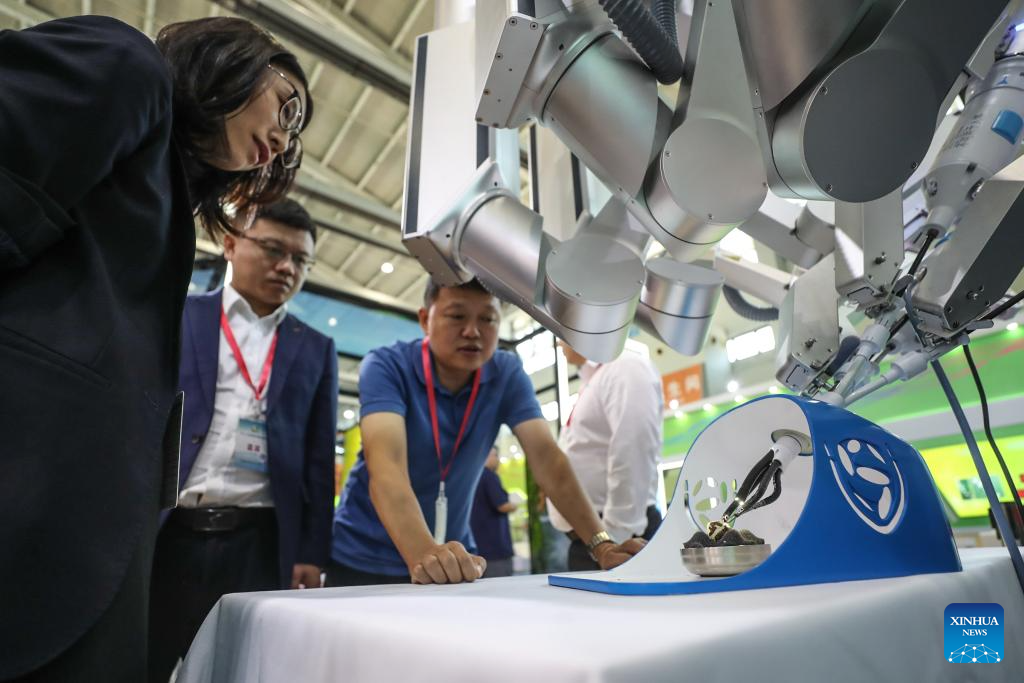
The 2023 China International Fair for Trade in Services opens at China National Convention Center in Beijing, capital of China, September 2, 2023. /CFP
The 2023 China International Fair for Trade in Services opens at China National Convention Center in Beijing, capital of China, September 2, 2023. /CFP
Editor's note: John Gong, a special commentator on current affairs for CGTN, is a professor at the University of International Business and Economics (UIBE) and VP of Research and Strategy at the UIBE-Israel. The article reflects the author's views and not necessarily those of CGTN.
The 2023 China International Fair for Trade in Services (CIFTIS) officially opened in Beijing today. This is one of the three most important trade shows in China, the other two being the legendary Canton Fair in Guangzhou and the China International Import Expo (CIIE) in Shanghai dedicated to boosting imports. At the Global Trade in Services Summit of the CIFTIS this morning, President Xi Jinping delivered the opening speech via video.
As expected, Xi's speech focused on China's drive to further open up, for things like negotiations with partner countries on the negative list for trade in services and investment, and opening investment access in services areas such as telecommunications, tourism, law and vocational examinations. Some of these issues are related to China's commitment and obligations associated with accession to the WTO.
President Xi also talked about service trade as related to innovation-driven development. He said China will move faster to cultivate new drivers for the digitalization of services trade and promote the development of digital trade through reform and innovation. The following sentence is particularly noteworthy in the context of China's immense role of being the largest manufacturing hub of the global supply chain networks:
"We will push forward the integrated development of services trade with modern services industries, high-end manufacturing and modern agriculture to unleash more vitality for innovation."

Visitors view a piece of equipment for single incision laparoscopic surgery displayed at the 21st China International Equipment Manufacturing Exposition in Shenyang, northeast China's Liaoning Province, September 1, 2023. /Xinhua
Visitors view a piece of equipment for single incision laparoscopic surgery displayed at the 21st China International Equipment Manufacturing Exposition in Shenyang, northeast China's Liaoning Province, September 1, 2023. /Xinhua
China holds the largest manufacturing share as a percentage of a country's GDP among industrialized countries. Partly as a result, China has been the world's largest exporter of goods for many years, accounting for about 15 percent of total global trade. But manufacturing itself is also undergoing revolutionary changes these days, as it is getting more and more digitized, with the advent of a slew of new technologies including robotics, the Internet of Things, and artificial intelligence among others. As a result of this, an increasing part of the value added from manufacturing is actually through service provisioning. This is what President Xi means by "the integrated development of services trade with modern services industries, high-end manufacturing…"
The service trade data clearly shows this trend. In the last 10 years, China's service trade volume has been on a steady rise, increasing from $539 billion in 2013 to $884 billion in 2022. Meanwhile, China's service trade deficit has been steadily shrinking from $118.4 billion in 2013 to just $94.3 billion last year. The shrinking trade deficit manifests China's increasing competitiveness in manufacturing-related service exports. Broadly speaking, China's service exports in knowledge-intensive areas actually enjoys a trade surplus.
About two months ago, the Ministry of Commerce released some service trade statistics for the first five months of the year. According to that report, total trade volume in knowledge-intensive service trade increased by 13.6 percent to reach approximately $155 billion, already accounting for 43.1 percent of all service trade. Exports reached around $91 billion, increasing by 17.2 percent and imports reached $64.8 billion, increasing by 8.8 percent. So clearly, China's service trade sector is upgrading from a transportation, finance, and tourism kind of traditional model to a more sophisticated knowledge-based model.
Ultimately service trade is also one index manifesting a country's economic and technology competitiveness. Against today's backdrop of intensive competition between the United States and China, the transformation and the upgrade of manufacturing is critically important for our country's export sector to remain competitive, resilient and secure. The continued development of the modern service industries and the service trade holds the key to that success.
(If you want to contribute and have specific expertise, please contact us at opinions@cgtn.com. Follow @thouse_opinions on Twitter to discover the latest commentaries in the CGTN Opinion Section.)